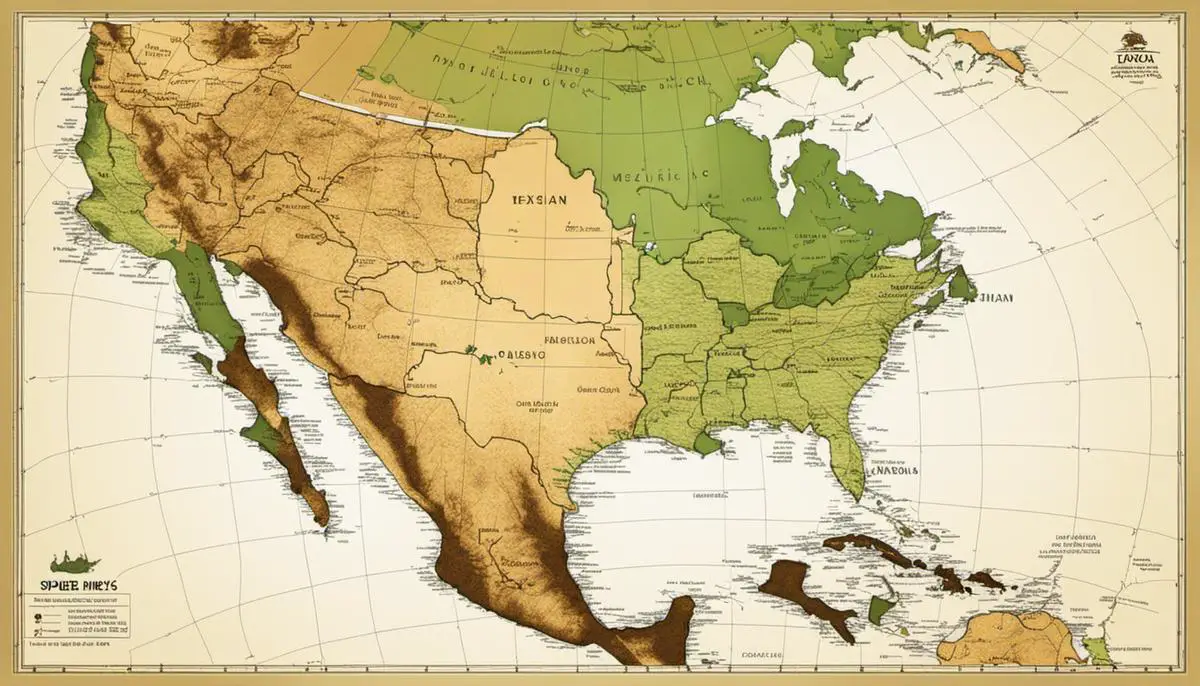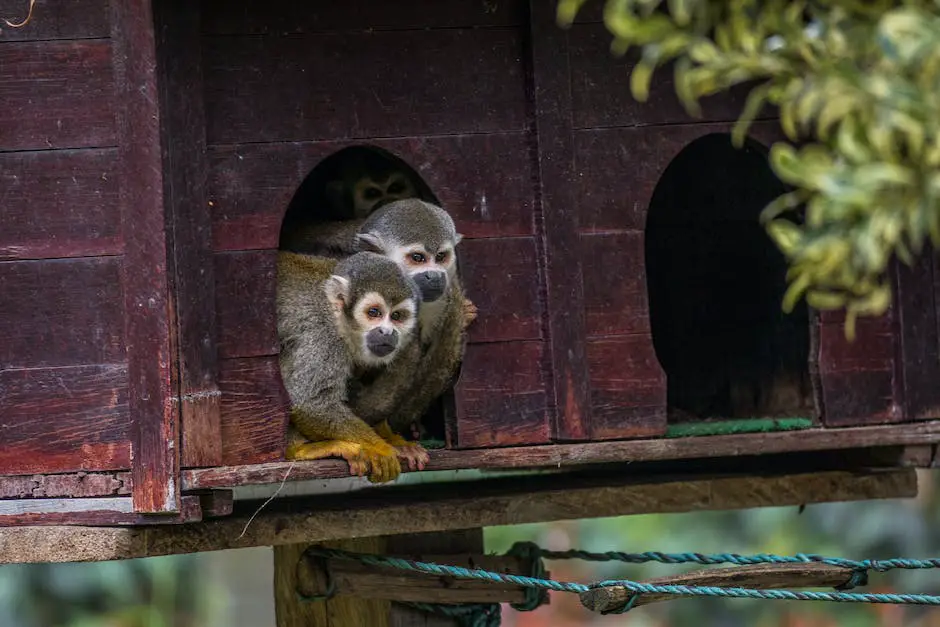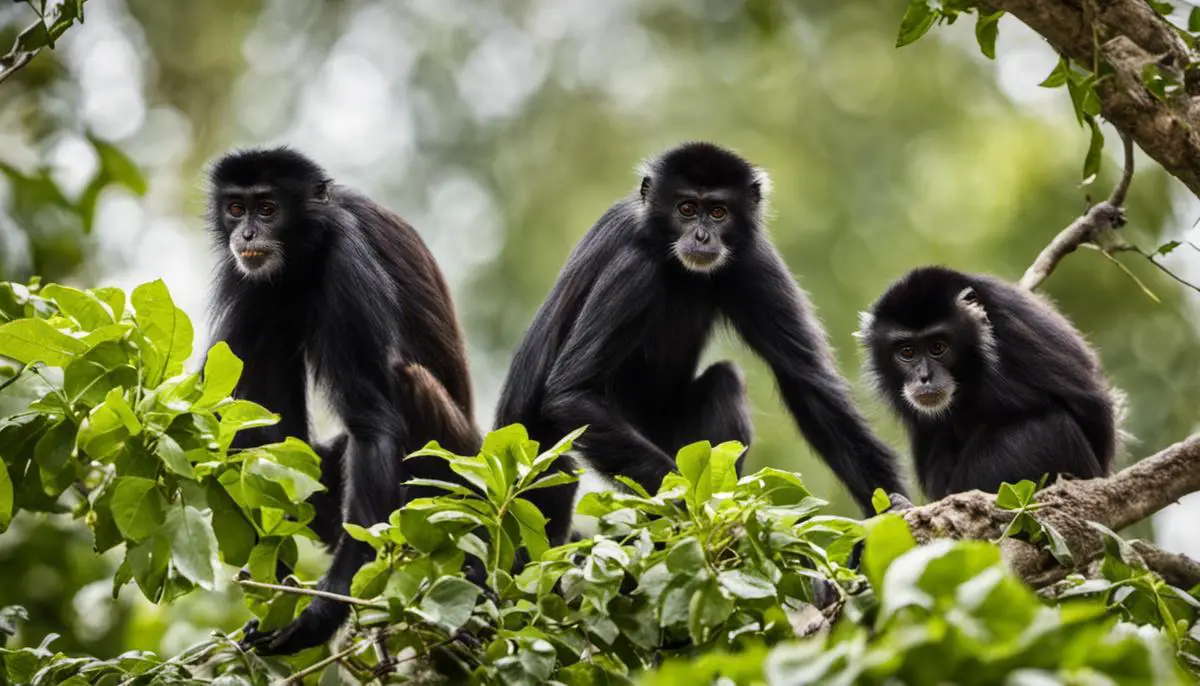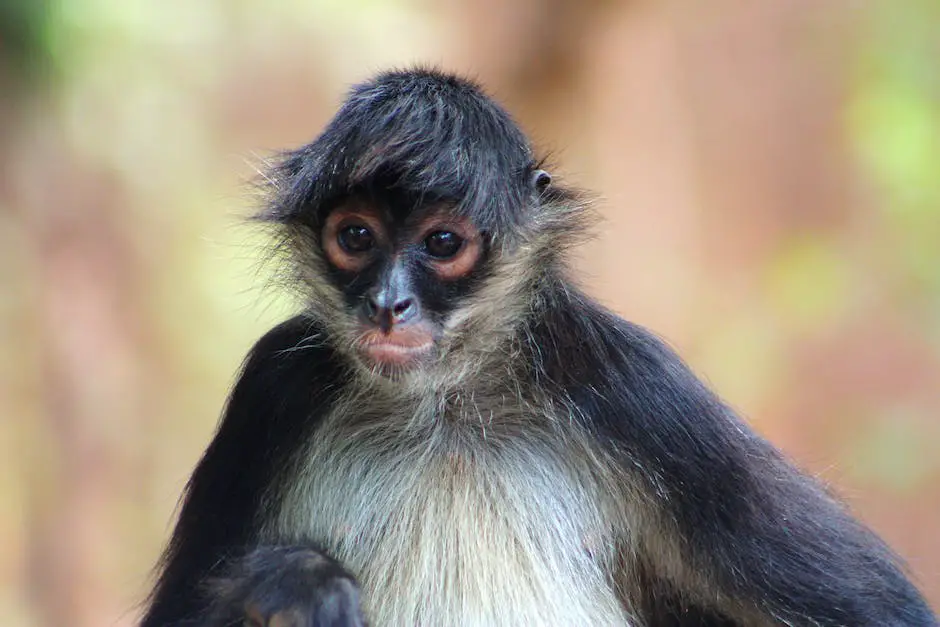Exploring the mysteries of Mexican Spider Monkeys
A myriad of complexities and wonders veil the world of primates, with the Mexican Spider Monkeys being notably captivating species. Revered for their acrobatic prowess and characterised by elongated limbs and prehensile tails, these creatures are integral components of their ecosystems in the forests of Central and South America.
With their geographical distribution, distinguishing physical attributes, and inherent behaviours, these primates continue to fascinate researchers and wildlife enthusiasts alike. Despite their remarkable adaptability, they teeter on the edge of survival, facing potent threats from deforestation, poaching and changing climates.
Far from being seen merely as victims, they embody cultural significance and hold potential benefits for scientific advancements.
Mexican Spider Monkeys – An Overview
Geographical Distribution of Mexican Spider Monkeys
Mexican Spider Monkeys, scientifically known as Ateles geoffroyi vellerosus, form one part of the seven subspecies of Geoffrey’s spider monkey. They have a specific range within the Americas. They are native to Mexico, principally occupying regions in the southeastern parts of the country. The stretch extends from the states of Veracruz and Oaxaca, and proceeds south into the Central American countries of El Salvador, Guatemala, and Honduras.
Unique Physical Characteristics of Mexican Spider Monkeys
Mexican Spider Monkeys are distinctive in their appearance. They possess long, slender bodies with prehensile tails which are used as a fifth limb during arboreal navigation. Interestingly, their tails exhibit a patch of skin on the underneath side near the tip, to enhance grip. Their limbs are particularly long with respect to their body size, giving them the ‘spider-like’ name. This physical characteristic facilitates movement in their forest habitat. Their fur is a combination of brown, gold, cream, and black, providing excellent natural camouflage. Mexican Spider Monkeys can grow to be approximately 61 centimeters in body length, with their tails reaching an impressive 89 centimeters.
Diet and Lifestyle of Mexican Spider Monkeys
Living in the dense forests, Mexican Spider Monkeys are predominantly frugivorous, with fruit constituting about 90% of their diet. However, they are adaptive feeders and can also consume young leaves, flowers, and insects when their preferred food sources are scarce. The monkeys’ foraging behaviour contributes significantly to primary rainforest regeneration due to the dispersal of seeds in their droppings.
Mexican Spider Monkeys are highly social animals and thrive in communities. These groups may be as small as a pair or as large as 35 individuals, led usually by a dominant female. These communities are coherent yet flexible, frequently splitting into smaller subgroups known as ‘fission-fusion’ societies.
Mexican Spider Monkeys: Population Challenges and Conservation Measures
The Mexican Spider Monkey, known scientifically as the Ateles geoffroyi vellerosus, finds itself in the unfortunate position of being classified as Endangered within the IUCN Red List.
The slow rate of reproduction, whereby females bear a single offspring roughly every three to four years, significantly contributes to their main vulnerability.
Major threats to these primates originate from habitat loss, specifically from logging, agricultural activities, and increased urbanization compounded by hunting. This combined destruction and fragmentation of their forest homes dislodges numerous Mexican Spider Monkeys, casting their survival prospects into uncertainty.
Current conservation initiatives focus on promoting sustainable forestry, reducing hunting pressures, and raising public awareness about the treacherous predicament these apes are in.
In an effort to ensure the retention and growth of this monkey species, surveillance, and monitoring schemes have been established within reserves and protected areas. Moreover, captive breeding initiatives coupled with reintegration into safeguarded territories are giving these intriguing and one-of-a-kind primates a vital chance for recovery.

Ecology and Behaviour of Mexican Spider Monkeys
The Intriguing Dietary Habits and Social Behaviours of Mexican Spider Monkeys
Perhaps one of the most captivating aspects of the Mexican Spider Monkey is its dietary preferences. These monkeys are primarily frugivores, with fruits amounting to a substantial 83% of their food consumption.
Beyond fruits, they consume leaves, flowers, and aerial roots, and in situations where fruit is less accessible, they supplement their diet with insects and small reptiles. Interestingly, their pursuit of the most succulent fruits frequently influences their movement patterns and foraging habits, cementing their role as integral seed dispersers within their ecosystems.
Furthermore, Mexican spider monkeys have a distinctive social structure among primate species, a ‘fission-fusion’ type. They don’t exist in static, closely-knit groups.
Instead, their ‘troops’ continually vary in size and composition based on factors like food availability and predation risk. These adaptive creatures frequently sub-divide into smaller groups or pairs for daytime foraging, only to re-gather into more significant troop size during the night.
Mating Behaviour and Reproduction
The reproductive patterns of the Mexican Spider Monkey also provide intriguing insights. Unlike many species, no specific mating season is noted for Mexican Spider Monkeys.
Female adult individuals are usually the initiators of mating, indicating their choice for a partner through physical closeness or specific vocalizations. After a gestation period of approximately 7.5 months, females give birth to a single offspring. Offspring remain highly dependent on their mothers for nearly five years after birth, implying a slow reproductive rate for this species.
Adaptability and Habitat
Adaptable habitually, Mexican Spider Monkeys are predominantly arboreal and can be found across a range of forest habitats. They are largely known to inhabit evergreen and semi-deciduous forests as well as mangroves along the coast.
These primates are highly adept at moving swiftly through the forest canopy, using their long prehensile tails which act as a fifth limb providing extra support and grip. Their adaptability is significantly influenced by fruit availability and perturbations within their habitats, often displaying resilience to natural disasters such as hurricanes.
Conservation Efforts
In the eye of rampant habitat loss and hunting – serious threats that pose severe challenges – Mexican Spider Monkeys nonetheless demonstrate an impressive level of resilience and adaptability. Nonetheless, these industrious animals struggle due to their slow reproductive rate.
Consequently, mankind-made threats continue to make their survival a question of debate. The absolute need of the hour is making relentless efforts to conserve their existence, as well as working rigorously towards preserving and restoring their natural habitats.
A quest to ensure not only the survival of the Mexican Spider Monkeys but also letting them thrive is urgent and fundamental.

Threats and Conservation of Mexican Spider Monkeys
Threats to Mexican Spider Monkeys
Mexican Spider Monkeys (Ateles Geoffroyi vellerosus), unfortunately, finds themselves in a critically endangered position owing to numerous anthropogenic influences. Their existential threat primarily stems from the violent wave of deforestation. Habitants of Mexico’s tropical rainforests hold a paramount role in maintaining biodiversity within these ecosystems. Nevertheless, excessive logging and agricultural land conversion have eradicated gigantic portions of their natural habitat.
Illegal poaching, another menace, puts Mexican Spider Monkeys at risk. Often, they are caught and sold illicitly as exotic pets. In conjunction with habitat loss, poaching is causing a drastic shrinkage in their population count.
With their slow pace of reproduction, wherein a female bears only one offspring every 2-4 years, their population diminishes rapidly and barely manages to replenish itself at an adequate rate.
A growing threat encompasses climatic changes and altered weather patterns. With the acceleration of global warming, the frequency and severity of storms are intensifying, rendering the habitats of these monkeys vulnerable. This disruptive weather leads to a loss of fruit trees, a primary food source for the Spider Monkeys, severely impacting their survival chances.
Safeguarding Mexican Spider Monkeys: Rolling Out Conservation Measures
The critical need for the conservation of Mexican Spider Monkeys cannot be overstated, given their classification as a critically endangered species on the IUCN Red List. Consequently, numerous organizations and initiatives have rallied together to halt and reverse their declining population.
One of the significant thrusts in these efforts is the introduction of laws and regulations. The Convention on International Trade in Endangered Species of Wild Fauna and Flora (CITES) has enlisted Mexican Spider Monkeys under Appendix I, effectively outlawing international trade involving these primates. Moreover, Mexican national laws echo this sentiment, declaring their hunting, capture, and trade as illegal activities that warrant legal punishment.
Conservation campaigns directed at preserving their natural habitats and enlightening the local communities about their ecological role have been launched. Likewise, numerous non-profit entities and sanctuaries dedicate their efforts to rehabilitating captured or harmed spider monkeys and aim to reintroduce them into the wild.
The recent past has seen a heightened drive towards further research to gain a more profound understanding of their ecology, behaviour, and reproduction. This research data is pivotal in formulating conservation strategies and bolstering their wild population.
Collectively, legal safeguards, initiatives to conserve their habitats, rehabilitation works, and research have been employed to ensure Mexican Spider Monkeys’ survival and recovery. However, continuous and cooperative efforts remain necessary to contend with the substantial threats menacing this species.
Protecting the Mexican Spider Monkeys isn’t just about a single species; it’s equally about preserving the biodiversity of the Mexican rainforests they are integral to.

Mexican Spider Monkeys: Significance and Influence
The Crucial Role of Mexican Spider Monkeys: Their Ecological Significance
Mexican Spider Monkeys are fundamental pillars of their ecosystems. They doubly serve as extraordinary seed dispersers, thus buttressing the diversity and structure of the tropical forests. A large proportion of the seeds they ingest germinate and thrive post-digestion, enhancing the propagation and survival of various plant species in the process. As a result, spider monkeys are indispensable players in the regeneration of tropical forests, reinforcing their overall health and sustainability.
Influence on Indigenous Cultures
Mexican Spider Monkeys also hold considerable cultural significance across various indigenous groups in Mexico. These primates feature prominently in the mythology and iconography of the Olmec and Maya civilizations. They are often viewed as sacred beings and symbols of power and wisdom in these cultures. The Mayans, in particular, have various stories involving the mischievous and intelligent behaviour of the spider monkeys, often symbolizing the dualities of life.
Importance for Tourism
These species are major attractions for ecotourism, providing economic benefits for local communities. Their remarkable acrobatics, social behaviour, and exotic appearance make them an appealing sight for tourists. However, this also necessitates careful management strategies to minimize disturbance and ensure their survival and well-being.
Contributions to Scientific Research
Mexican Spider Monkeys provide valuable insights into primate behaviour and evolutionary biology. Studies focusing on their complex social structure, communication methods, and behavioural patterns can significantly improve our understanding of primate evolution and cognition. For example, research on their fission-fusion society, where group sizes and composition are highly variable, can yield comprehensive insights into social dynamics, cooperation, and competition among primates.
In the realm of biology, Mexican Spider Monkeys serve as vital organisms for examining aspects such as diet, digestion, and locomotion. Their principally fruit-based diet helps researchers understand the process of digestion and the role of gut bacteria in breaking down food and deriving energy. Additionally, their unique form of locomotion, brachiation or swinging by their arms, offers insights into primate anatomy and physical adaptations.
Conservation Efforts
Given their ecological, cultural, and economic significance, the conservation of Mexican Spider Monkeys is crucial. They are, however, currently listed as “Endangered” by the International Union for Conservation of Nature (IUCN) due to habitat loss, hunting, and illegal pet trade. Conservation strategies include habitat protection, regulating tourism, and reforestation programs. Public education about these charismatic creatures can additionally garner support for their preservation and appreciation of their multifaceted importance.

From every perspective – biologically, culturally, ecologically – Mexican Spider Monkeys pose an incredible importance. Their contribution to the continuity of the tropical rainforest economy is irreplaceable.
Moreover, their cultural symbolism and influence on indigenous communities reinforce their significance beyond ecological terms. Their existence and behaviour offer advantageous insights for scientific inquiries.
One might argue that the greatest challenge they impose is a shared one – the responsibility to conserve them. With deforestation, hunting, and climate change looming as unprecedented threats, it is incumbent upon us to safeguard their future.
Our collective actions to conserve these endangered species will not only dictate the survival of Mexican Spider Monkeys but also the health of the ecosystems they call home.

